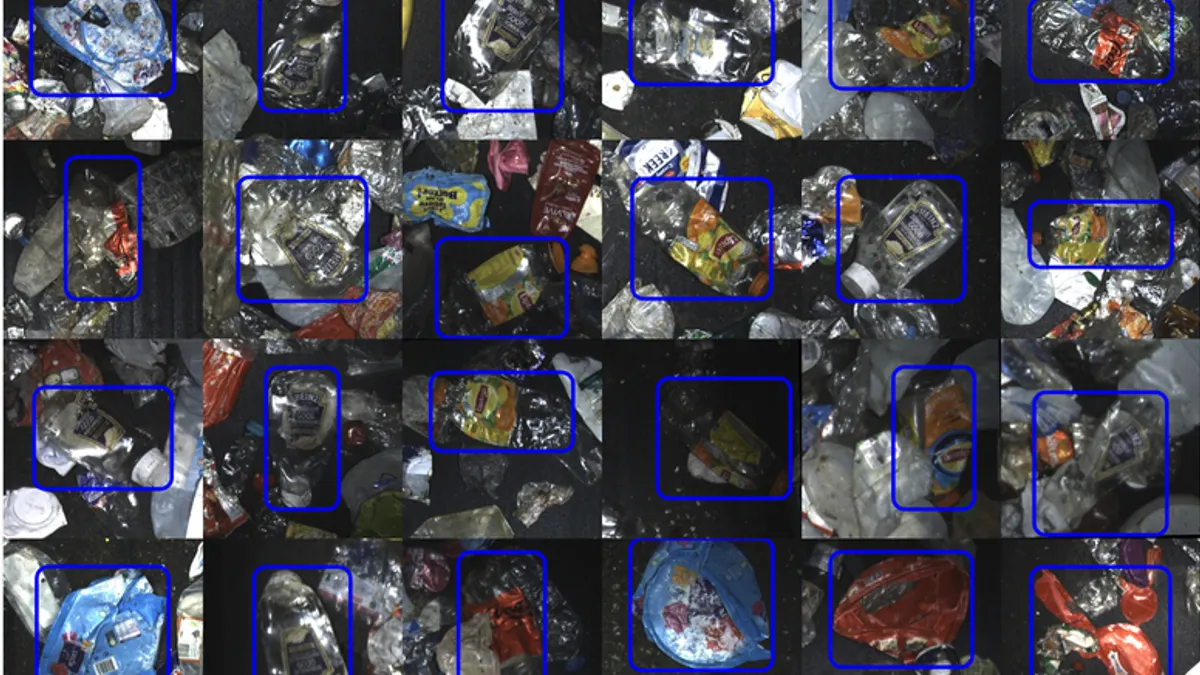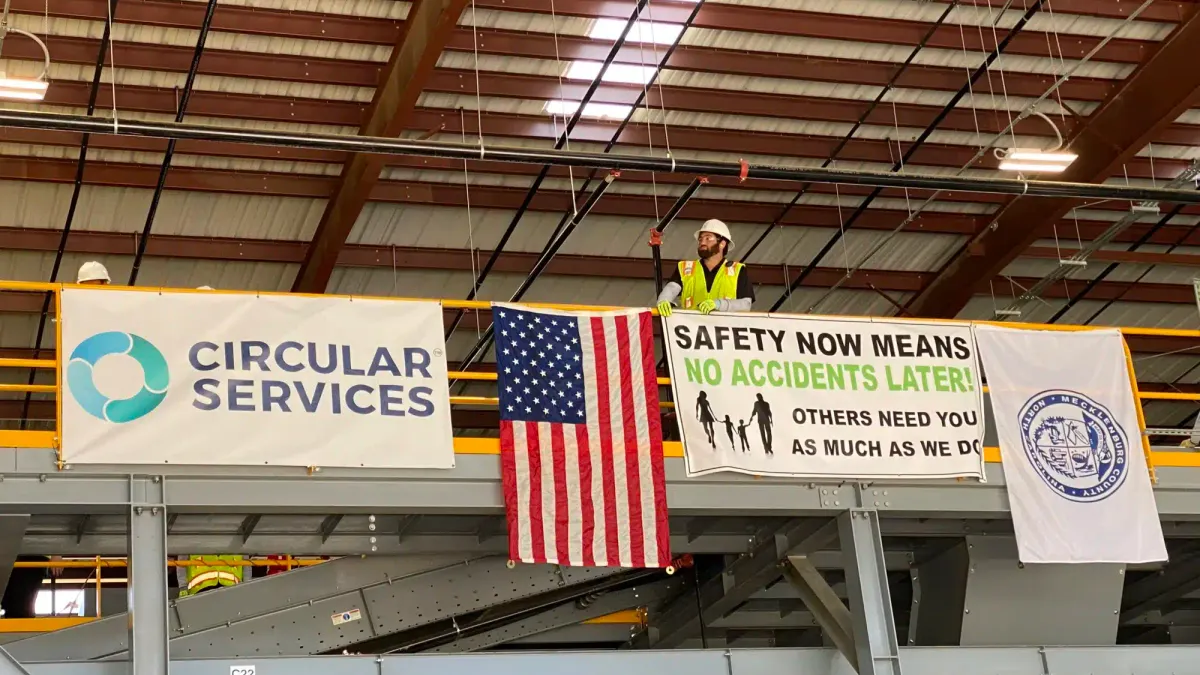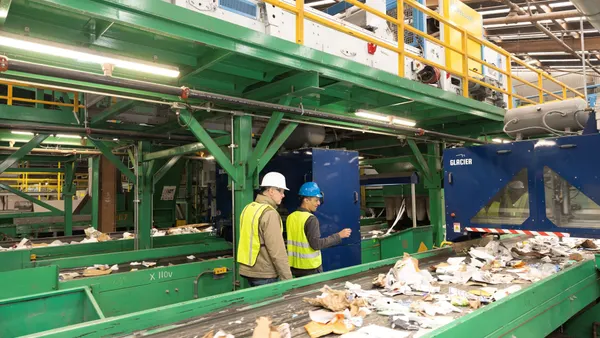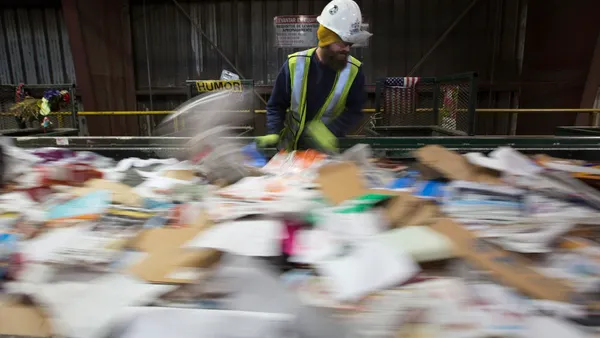The following is a contributed piece and does not reflect an editorial position by Waste Dive. Information on what that entails and how you can submit is available here.
Last week’s gathering of industry representatives, community leaders and policymakers at WasteExpo 2019 undoubtedly led to considerable discussion on the global recycling crisis. But a byproduct of this condition – the recent push for incineration (also referred to as waste-to-energy) at the recent North American Waste-to-Energy Conference as a sound solution for municipal waste – must be part of the conversation.
Prompted by the current disruption in recycling end markets, this development has put a spotlight on a broken link in the circular economy. Indeed, the incineration of solid waste or recoverable materials has long been considered by the environmental community and government policymakers to be effectively on par with landfilling by this metric. Whether buried or burned, potentially valuable materials are effectively lost forever. As we grapple with recyclables that do not currently have clear end markets, local decision-makers should view the issue before them not simply as a financial one, but also as a materials management challenge.
While pricing may migrate within the menu of landfill and recycling services, a systemic shift to incineration will lead to an increase in environmental effects. WTE embodies an archaic view of materials management and exposes communities and local governments to a variety of risks, including toxic air emissions and environmental justice concerns.
In contrast, recycling and reuse fundamentally reduces net environmental impacts and tops the EPA’s waste management hierarchy, while incineration is at best a disposal practice with a wink and a nod to renewability. Incineration practices do not actually enhance sustainability, but rather leave behind a lasting and negative environmental footprint that necessitates strict regulation under the Clean Air Act, the Clean Water Act, and the Resource Conservation and Recovery Act.
Moreover, the WTE business model is fundamentally at odds with diversion, as its revenues are dependent on maximizing the volume of material to burn. Looking to increase incineration market share at a time of temporary disruption smacks of exploitation of local communities who may feel they are facing a Hobson’s choice.
While the same could be said for wholesale landfilling, cities have long sought to develop recycling programs as a means to reduce their reliance on landfills, not increase them. An uptick in landfill utilization at this time does not pose the risk of backsliding that a systemic shift to incineration would. On the contrary, some cities have been able to work with integrated materials management companies to find acceptable, albeit painful, interim accords that preserve gains made in the collection and diversion of recyclable materials.
Further, the argument that incineration yields renewable power is misdirected. In fact, it casually demeans the more widely accepted sources of renewable energy (wind, water and sunshine), while itself relying on human detritus. Such "renewability" implicitly promotes waste generation and does little to signal research and development stakeholders to push forward.
So while there are serious challenges affecting the industry today as a result of global recycling conditions, communities should be moving away from incineration as a materials management practice – not backsliding into more of it.
Fortunately, some states and municipalities have already figured this out. The New York state legislature passed an initiative in March to restrict the construction of new incinerators, and a controversial incinerator recently shut down in Detroit. And Baltimore's imposition of strict air requirements – intended to lead to the closure of incinerators and which has prompted a legal challenge – could necessarily prompt stakeholders to develop reuse and recycling programs in order to more prudently manage existing landfill capacity.
Hopefully this trend will continue – but in the interim, it is important for community leaders to recognize that the potential harm of incineration is real, and that the risks extend well beyond the immediate concerns of neighbors living near a facility. The practice of incineration, like landfilling, sacrifices any effort to extract maximum value from materials by removing those materials from the stream of commerce. This loss deprives manufacturers from contributing to America's vision for a circular economy, and it compromises the ability of local governments to legitimately achieve their sustainability goals.
It is also critical that community leaders recognize a return to incineration as a solid waste management solution ultimately disincentivizes collective innovation in materials management that is needed in order to move closer to a complete circular economy loop. Of course, innovation cannot occur without history or a foundation to build upon. As such, industry leaders should reflect on the U.S. Environmental Protection Agency's original goals for its resource conservation and recovery programs.
Now in its 25th year, EPA's WasteWise program adopted a materials management hierarchy, placing recycling at the top just after reuse. In doing so, the agency recognized the importance of creating networks among business, government and NGOs in support of both collecting recyclables and fostering markets for recycled content products.
EPA's programs and models have long sought to inform and empower communities and industry to be sound stewards of their waste streams through innovation and partnerships. This approach was envisioned by Congress and continues to guide EPA to this day. That is why the agency's consistent rationale for rulemaking, guidance documents and outreach efforts has focused on defining and understanding the lifecycle impact of the use of our natural resources.
In contrast, the permanent loss of otherwise recoverable materials constitutes a setback for – and even an unraveling of – all that has been achieved to date. And it reveals a broken link in all that we might achieve going forward in America's path toward a circular economy.
Scott Sherman previously served as the associate assistant administrator for the Office of Solid Waste and Emergency Response at the U.S. EPA and as assistant general counsel of the Texas Commission on Environmental Quality. He is a member of the University of Houston Law School’s Environment, Energy, and Natural Resources Center and an adjunct professor of environmental law. The opinions expressed herein are those of the author alone and do not necessarily reflect those of the University of Houston.

















